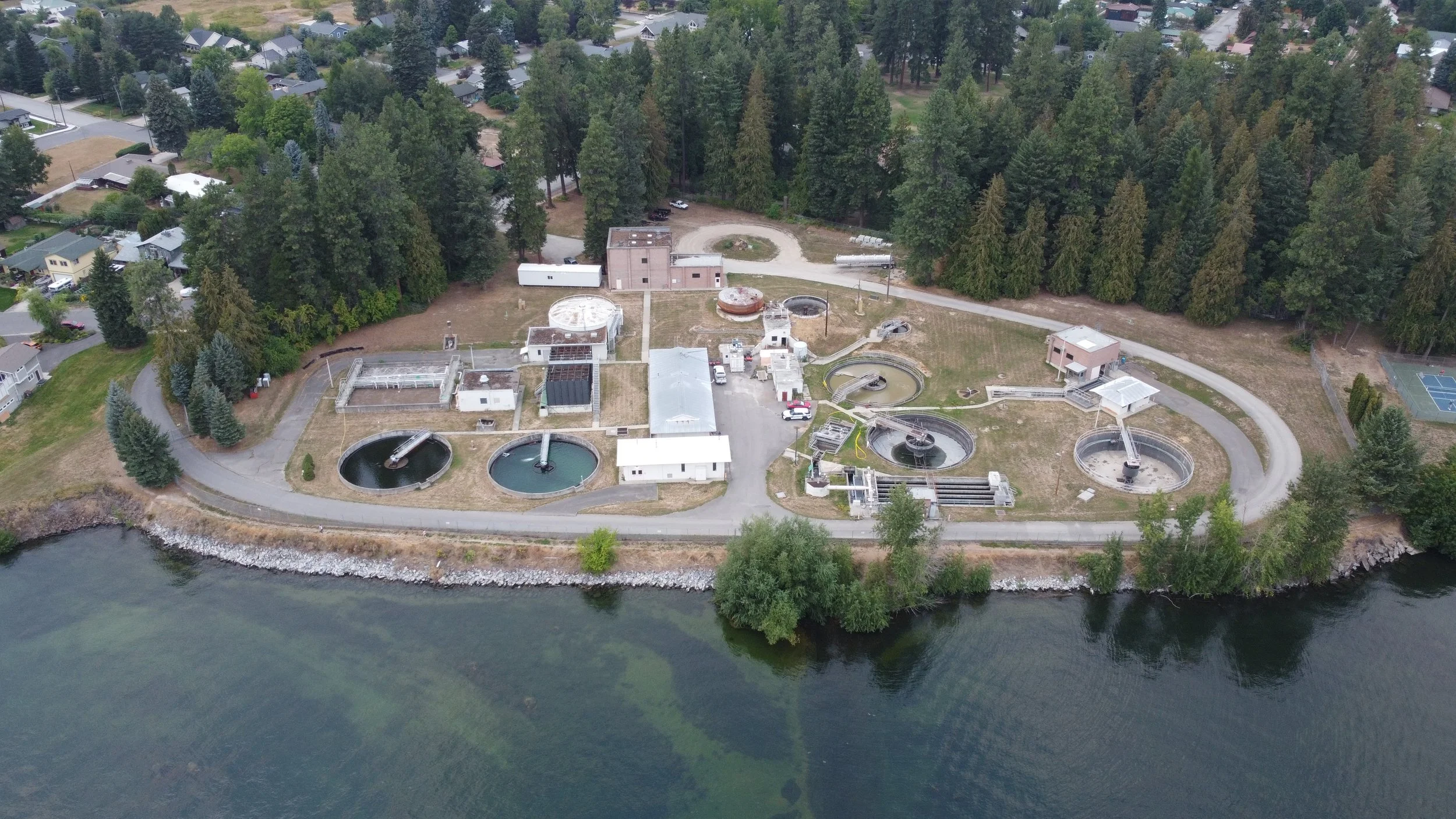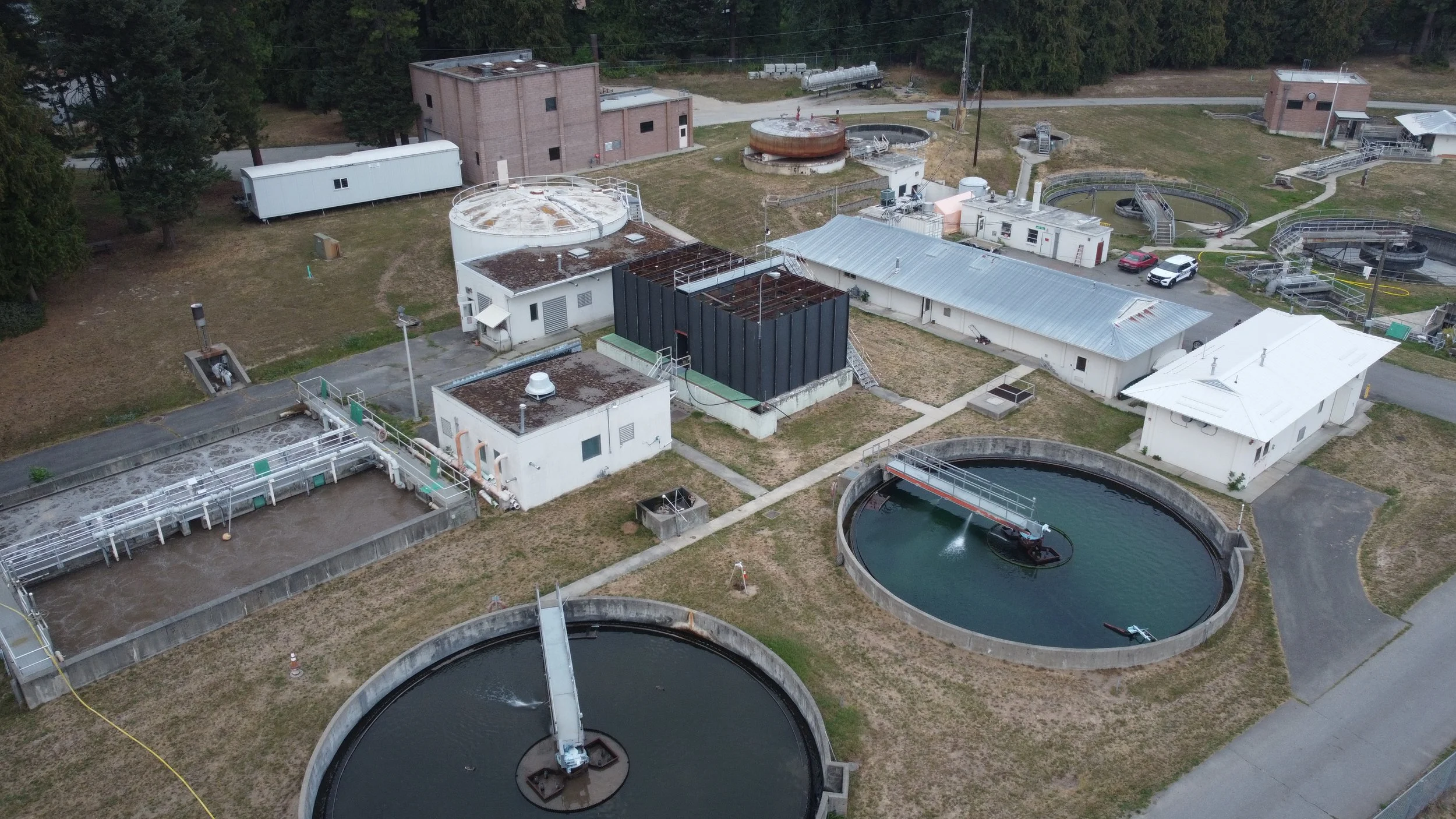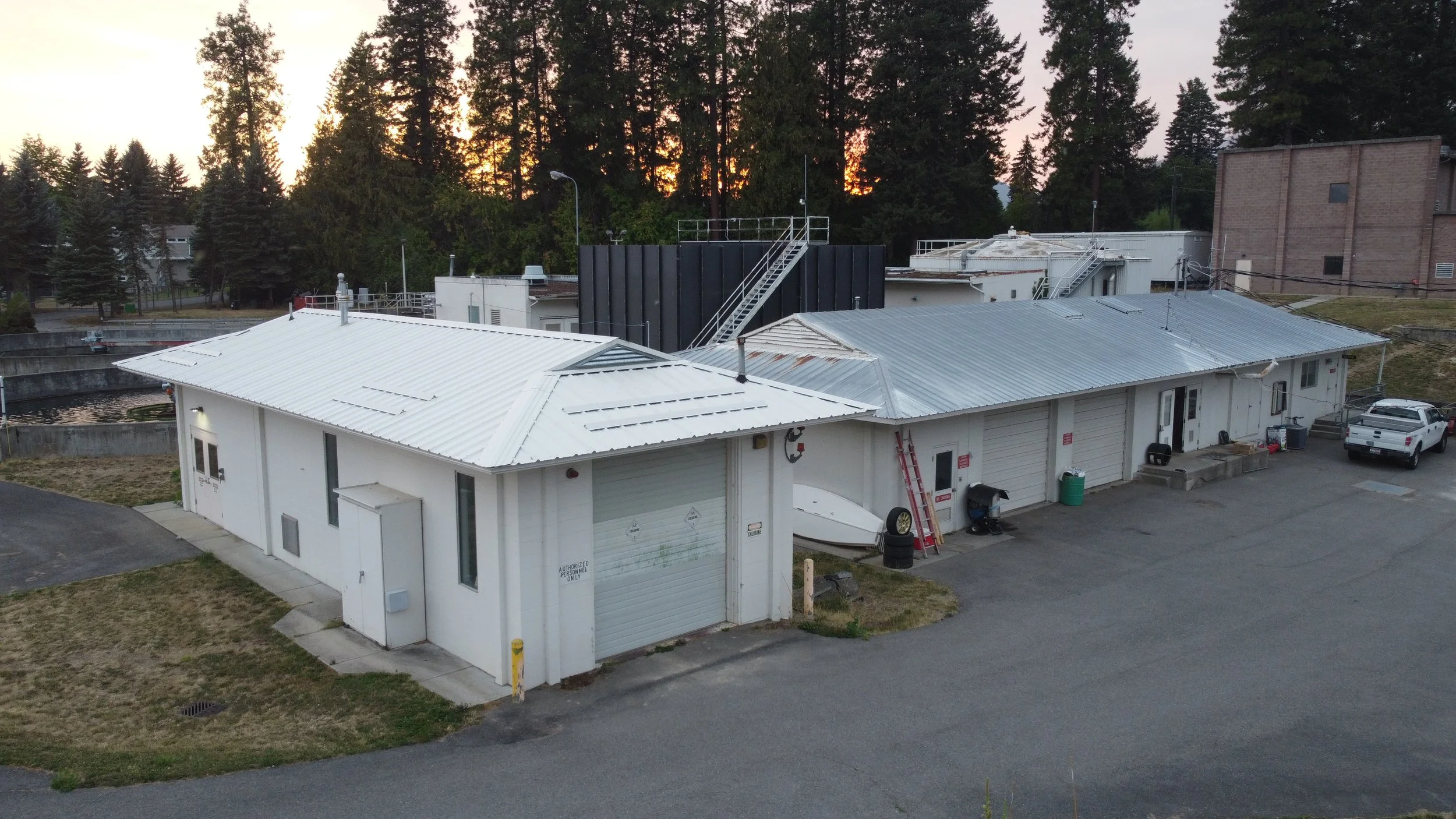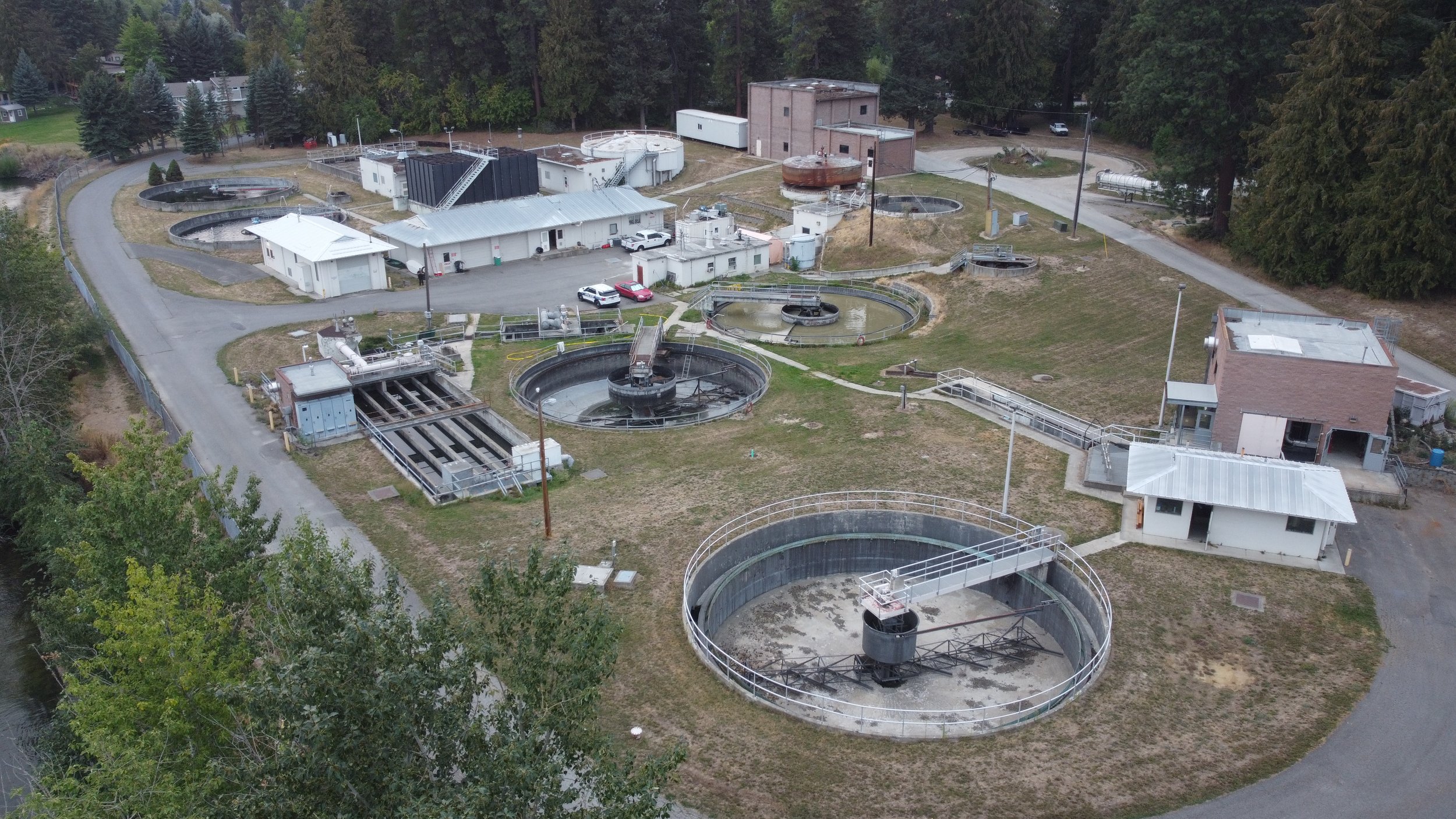
Wastewater Treatment Plant Project
Sandpoint’s wastewater treatment plant has served the community for more than 70 years.
Much of the equipment was built in the 1950s–1980s and is now at the end of its useful life. The plant no longer has enough capacity to reliably meet the community’s current and future needs, and it struggles to keep pace with state and federal permit requirements for protecting water quality in the Pend Oreille River.
What needs to be replaced?
Headworks (Screening & Grit Removal)
The plant’s current coarse screens cannot keep up with projected 2045 flows and don’t meet redundancy standards. They will be replaced with two new, higher-capacity mechanical screens, installed in widened channels.
The grit chamber, which protects downstream equipment from sand and gravel, is past its useful life and no longer removes enough grit. It will be replaced with a new vortex grit removal system and modern grit dewatering equipment.
Primary Treatment
The existing clarifiers were brought over from the Faragut Navel base in the 1950s and are still in use today. These are undersized, and showing structural wear. They will be demolished.
A new Primary Filter Building will be constructed, housing two primary filters and a new influent pump station. This building will also contain upgraded electrical systems, including switchgear and motor control centers.
Primary filtration will improve the reliability of solids removal and prepare flows for downstream treatment.
Secondary Treatment (Biological & Clarification)
The facility’s current aeration basins, which supply oxygen to beneficial bacteria that remove pollutants, do not have enough treatment capacity for 2045 and will be demolished.
They will be replaced with three new activated sludge basins, designed with both anoxic (low oxygen) and aerobic (high oxygen) zones to improve nutrient removal.
The existing blowers are near failure and undersized. They will be replaced with new turbo blowers housed in a new blower building.
Two new secondary clarifiers will be built to settle out solids after aeration. The existing clarifiers lack capacity and will be decommissioned.
New return activated sludge (RAS) and waste activated sludge (WAS) pumps will replace older pumps that are difficult to operate and undersized. A new scum removal system will also be added.
Disinfection
The current gas chlorination/dechlorination system poses a safety risk for operators and nearby residents. It also lacks capacity for projected peak flows.
It will be replaced with a UV disinfection system in a new building, which eliminates pathogens without storing hazardous chemicals.
Auxiliary Systems
The controls and communication system, which serve as the central nervous system for the plant, are outdated and prone to failure, threatening permit compliance. They will be fully replaced with a modern monitoring and automation system.
Electrical service, backup power, and non-potable water systems will be expanded to support new equipment.
Administration & Support Facilities
Currently, staff offices, lab space, and break areas are crammed into a shared building with pump systems, which is not safe or functional.
A new administration building will house the laboratory, offices, workshop, and staff facilities.
Solids Handling (Future Phase)
The City’s single anaerobic digester is undersized, has no redundancy, and shows structural concerns.
Sludge thickening and dewatering systems are aging and need replacement. These upgrades will be designed in a separate future phase, since they are major cost drivers beyond the current project scope.
Timeline
Preliminary Engineering Report: Complete in 2025, documenting need and design requirements.
Design Phase: Winter 2025 into 2026.
Construction Start: Bridge Improvements Begin Summer 2026.
Project Duration: Approximately five years, with phased construction so the plant remains in service at all times.
Why this investment matters
Protects Lake Pend Oreille and the Pend Oreille River by reducing pollutants.
Ensures the City can meet environmental permits and avoid costly fines.
Reduces the risk of breakdowns that could interrupt service.
Provides safer facilities for operators and the public.



